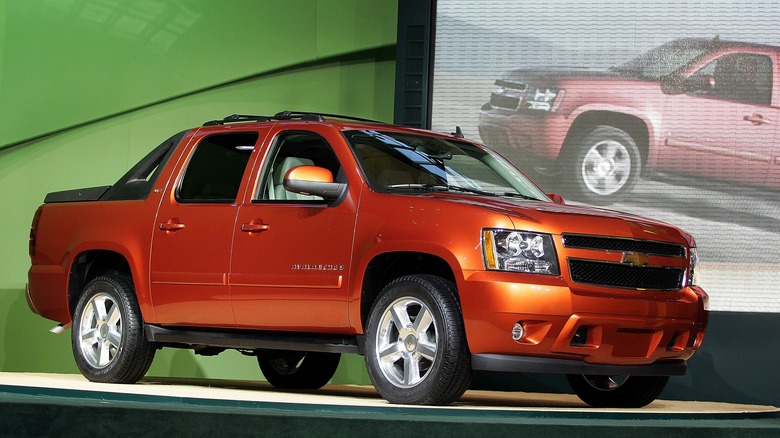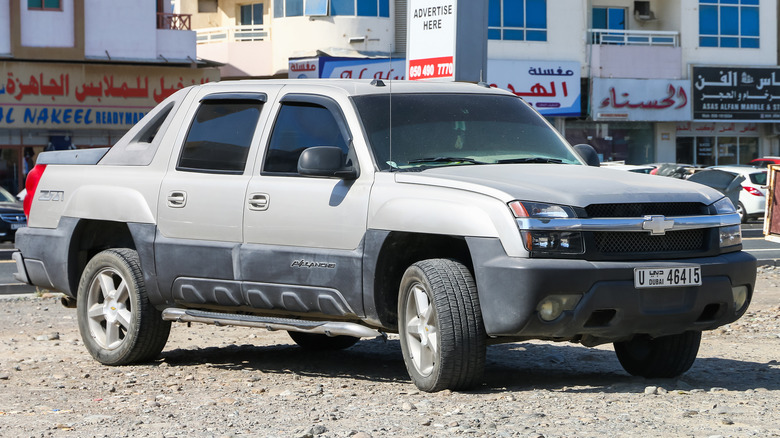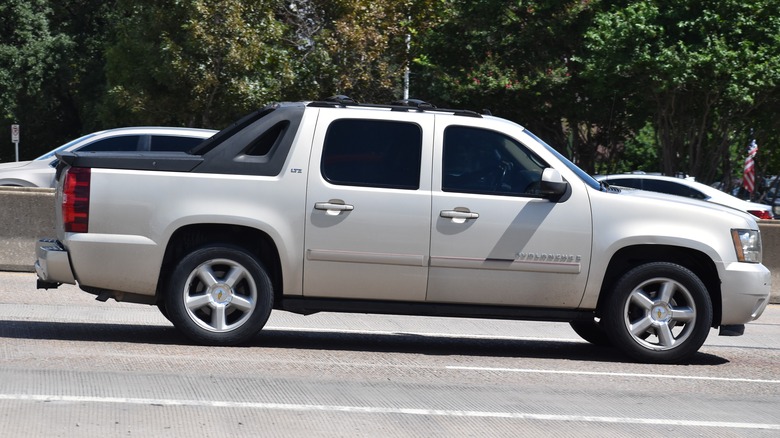Chevrolet introduced the Avalanche in the early 2000s on the GMT800 platform that was shared with full-size SUVs and trucks like the Tahoe, Silverado, and Suburban. Chevy announced the first-gen Avalanche in February of 2001 as a 2002 model and started production a few months later. Those early versions had a 285-horsepower 5.3-liter Vortec V8 and were available in two- and four-wheel drive formats. Later that year, Chevy introduced the Avalanche 2500 Series with a 340-horsepower, 8.1-liter V8 under the hood. Its combination truck/SUV body style landed the Avalanche on our list of Chevy’s 10 strangest vehicles ever, but it still took home the 2002 Motor Trend Truck of the Year award. This honor was thanks in part to the unconventional Convert-A-Cab midgate.
Advertisement
The folding bulkhead allowed for cargo-hauling versatility and was unique to the Avalanche and its Cadillac Escalade EXT cousin. In an interesting twist of fate, the midgate has made a comeback on the 2024 Chevy Silverado EV, which makes it a sort of spiritual successor to the Avalanche. The second-generation Avalanche arrived in 2007 and used GM’s new GMT900 platform. It remained a cross between a Suburban and Silverado, although Chevy ditched the heftier 2500 version. More importantly, the new Avalanche shed the hideous plastic body cladding from the first-gen model. Buyers were offered the choice of two V8 engines: a 320-horsepower, 5.3-liter Vortec or a 6.0-liter beast that put out 366 horses. GM announced the end of Avalanche production after the 2013 model year, thanks to declining sales and GM’s bankruptcy.
Advertisement
The Avalanche initially sold well
According to GM Authority, Chevrolet sold 52,995 Avalanches in 2001, and sales climbed to a peak of 93,482 units in 2003. Those numbers began to drop sharply, and in 2008 Chevy sold just over 35,000 Avalanches. For perspective, the bowtie sold 465,065 Silverados that same year. In 2011, Chevy barely moved 20,000 of the quirky truck/SUV hybrids from dealership lots, although Avalanche sales got a bump of a few thousand units in 2012 when the model’s cancellation was announced. When the Avalanche finally went to the grave after the 2013 model year, its Cadillac Escalade EXT twin went along with it.
Advertisement
The Avalanche never came close to threatening the Silverado or Suburban on the sales charts, but it received favorable reviews from its owners. “I bought this truck used six years ago, and it still runs like new,” said a 2004 Avalanche owner at Edmunds. “My first impression was how dumb it was to merge an SUV and truck,” said another owner. “I test-drove it, and I fell in love.” Other owners gave the Avalanche an average rating of between 4.5 and 4.8 out of 5 stars depending on model year, with many praising its versatility and dependability.
The Avalanche was the victim of belt-tightening at GM
GM’s ill-timed bankruptcy in 2009 was also a factor in the discontinuation of the Avalanche. An insider interviewed by GM Authority revealed that a new-to-GM manager questioned the simultaneous existence of two Chevy full-size trucks: the Silverado and the Avalanche. GM was intent on trimming the fat after its financial failings, so the automaker commissioned a study on whether a third-gen Avalanche would make business sense.
Advertisement
The study — which the insider said “wasn’t entirely accurate” — concluded that the potential development, production, and marketing costs were higher than the projected profits from a new Avalanche. Some of the brands that GM discontinued were dropped before the bankruptcy and federal bailout, but the necessary cost-cutting led to the axing of a few others around the same time the Avalanche was abandoned.
In addition, disagreements with GM’s labor unions forced the automaker to produce more cars than were demanded and sell the excess inventory using steep discounts, promotions, and rebates. The practice made GM vehicles less profitable to produce while also driving down their resale value. Since the new GM brass was understandably unwilling to take risks post-bankruptcy, any hopes of a third-generation Avalanche based on the then-new K2 platform were quickly dashed.
Advertisement






:max_bytes(150000):strip_icc():format(jpeg)/TAL-lead-image-JOSTVANDYKEBVI0424-bcd0047a17f74aa0b215b00161e1d90d.jpg?w=150&resize=150,150&ssl=1)




